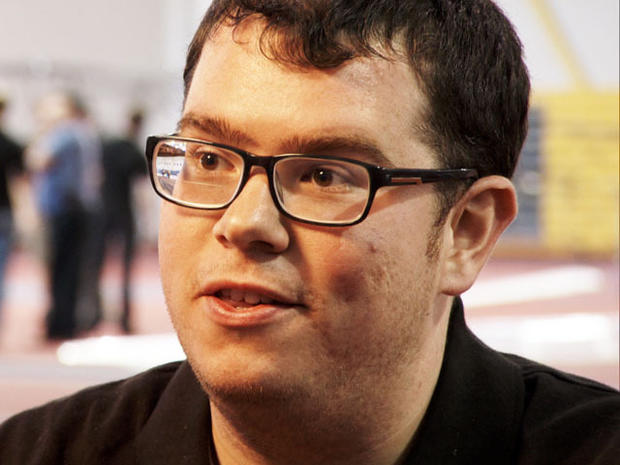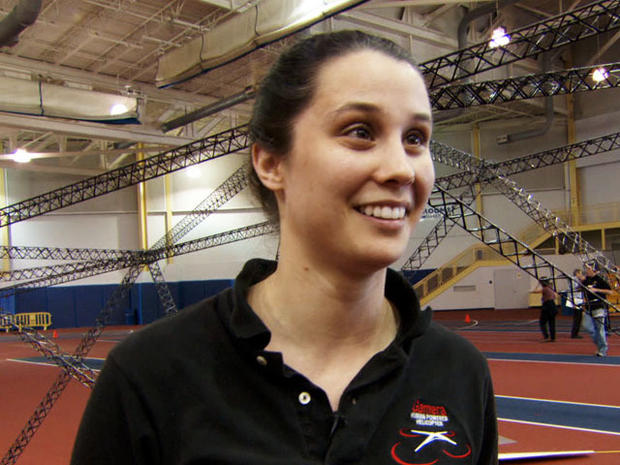Students defy gravity in human-powered helicopter
(CBS News) LANDOVER, Md. -- If Leonardo da Vinci were alive today, you can bet he'd be on the gym floor, down there with University of Maryland students, hoping to see what he first saw in his mind's eye more than 500 years ago: a human-powered helicopter.
Until recently, remarkably little progress had been made on da Vinci's design. A few got up -- kind of -- but quickly went down, often in the human-powered equivalent of flames.
"It's really hard to make a human-powered helicopter, because humans are, in general, really terrible engines," says Will Staruck. "It'd be easier to build a steam-powered helicopter than a human-powered helicopter."
So why, then, are Staruck and his Maryland team of rotorcraft engineering students even chasing this windmill?
"I mean, they told us it was impossible," he explains. "Who doesn't want to prove everyone wrong when they're told something is impossible?"
They've been at it almost five years now. Some of the grad students put in more than 40 hours a week, building and rebuilding the monstrosity. It's as wide as a 737 but weighs less than a small cheerleader -- just 82 pounds without a pilot.
It's an engineering marvel, but here's the really amazing thing: it works, at least in so far as it can consistently lift off and land in one piece.
"The practical application is -- honestly there isn't really a practical application," Staruck says. "You're not going to commute to work 65 seconds at a time anytime in the near future -- or probably ever."
Again, it's mostly a pride thing. But there's also a prize. The American Helicopter Society and the Sikorsky helicopter company are offering $250,000 to the first team or school that can hover straight for one minute and reach a height of 10 feet.
That height has been the hard part. For months, the Maryland kids never got above four feet.
"The university wasn't going to fund us anymore," says team member Elizabeth Weiner. "It'd been four years. There needed to be something that happened drastic."
Weiner was under the helicopter last summer during what was supposed to be their last, give-it-everything-they-got attempt.
"And I watched him pass me, and it went over my head, and I saw my finger tips not even close to touching the bottom of it," she says. "It was very overwhelming."
They flew eight feet, redefining the very word "impossible."
Now they say they can almost taste that prize flight.
"It'll be really exciting, and I think there will be that rush and that high for awhile right after," she says.
But what she's most looking forward to?
"A nap, some rest," she says. "It's going to be great."
AeroVelo, a Canadian team also competing for the AHS Sikorsky prize, claims on social media to have completed a successful prize-worthy flight of their human-powered helicopter on Thursday. American Helicopter Society International, which oversees the competition, said they are waiting to receive the flight data and it will take some time -- perhaps a week or two -- for their experts to review the data before any official determination of the flight can be made. Meanwhile, the University of Maryland team is working toward their next round of flight testing and plans on flying again later this month.
To contact On the Road, or to send us a story idea, e-mail us.



